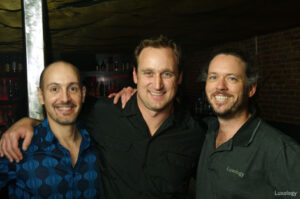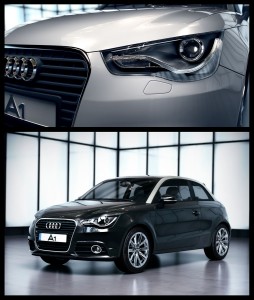London’s The Foundry acquires Bay Area 3D modeling and animation company Luxology and plan to forge a strong new player in the digital content creation market.
In a surprise announcement, The Foundry, based in London, has announced the acquisition of Mountain View-based 3D modeling and animation company Luxology. Luxology founder and CEO Brad Peebler told us the deal will be a merger in the sense that his team is joining The Foundry and both sides are looking forward to working together and developing new tools together. Luxology will continue to operate under its own name in California.

“We want to cast it as a merger because the word ‘acquisition’ makes people think the founders are going to cash out and leave, and nothing could be further from the truth—we’re jazzed about this and looking forward to having a bigger footprint in the industry.”
Terms of the deal have not been announced. In 2011, The Foundry was acquired in an equity deal by the Carlyle Group. At the time The Foundry CEO Bill Collis described the deal as an opportunity to help The Foundry grow. And, as anyone watching the company knows, The Foundry has been actively growing, acquiring technology and people. The headcount is currently at 160 before the acquisition of Luxology and The Foundry tells us they intend to keep growing. Peebler says, “the total company will be at 200 or more by the end of the year if they can find the people.”
So far, The Foundry has been growing its business to take in more of the pipeline for movie and TV content creation. The company now has one of the leading compositing tools in the business, Nuke, and it has added on Hiero for shot management, VFX conform and review; Katana for tools node-based look-dev and lighting; Mari for 3D painting; and a host of plug-ins for tools from Adobe, Autodesk and Avid.
In many cases, The Foundry’s toolset has evolved organically, often being developed by filmmakers as they adapt to the evolution of digital content creation and tackle problems in the creation of a film. For example, Katana was originally developed at Sony and Mari came from Weta.
One of the key’s to The Foundry’s evolution is that the tools have been developed as part of a pipeline and they often include tracking and management features. As The Foundry has added on tools, there has seemed to be a hole around 3D modeling and animation. The Foundry’s customers used models created in tools such as Blender, 3ds Max, Maya, Modo, etc.
The deal between The Foundry and Luxology got its start when both companies were visiting ILM at the behest of John Knoll. Knoll said he was interested in using Modo on a project but he wished it would work with Katana. As Peebler tells it, Knoll said, “I’m going to use Modo because it does exactly what I need. But I also need Katana, can’t you two guys work something out to make my life easier?” Collis and Peebler looked at each and said, sure, we’ll get back to you. Then over a couple of beers they both said, almost at the same time, “if we can do it for ILM, just imagine who else we can do it for?”

There is more to this relationship than a convenient fit between complementary tools. While there are plenty of points of intersection where Luxology fits into The Foundry portfolio, the work that Luxology has been doing in CAD, game development, and for advertising opens up new opportunities. Brad Peebler has told us that his company’s efforts in CG for advertising, using the Modo modeler and renderer to create photorealistic content for ad spreads and TV is one of the company’s fastest growing market segments. The content often goes from CAD to ad and Luxology is embedded in Bentley Systems MicroStation and Dassault Systemes’ SolidWorks. Obviously, Luxology has also been working on import and export for other leading tools from Autodesk, PTC, Siemens PLM, and McNeel Rhino, to name the obvious.
In addition, the work Luxology has done with the Unity game engine has opened up new relationships for the company in the game development field. Together, The Foundry and Luxology have new opportunities. In addition, The Foundry’s Mari 3D painting tool seems a complementary technology to Modo.
The Foundry Chief Scientist Simon Robinson stressed that Luxology and The Foundry will be integrated. He said, “we’re all one company; joint developments are already happening, and we’re very excited about them.” At the same time, the Foundry is committed to the work Luxology has done building new markets. “It’s also very important to us that we don’t disturb all the existing product roadmaps or the focus on the customers,” he said. “So at the same time as starting new stuff we’re going to make sure it’s business as usual. We are not diluting any existing effort. New staff will be added to enable us to get cracking on some of the new things we want to do together.”
As you might expect, The Foundry isn’t tipping its hand for future products but they too have noticed the opportunities for their products to work together. “There’s clearly huge potential for technology being integrated in new ways. It’s too early to make any announcements about the first fruits of this work, but we’re certainly going to make the most of the opportunity.”
Facing challenges
So far, to be in the business of 3D modeling and animation, you have to be able to do a lot of different jobs. The competition is fierce and there are a limited number of customers. At JPR we believe that the field is due to explode as new approaches for image capture and content creation evolve but in the meantime, the companies serving the film/TV, advertising, and game development industries are fighting hard for an edge. CAD has emerged as one opportunity to broaden the market. The Luxology team has been actively promoting the idea of using 3D models for advertising content. Their gradual acceptance in the CAD community has helped to propel this idea to more people and Luxology has been expanding the market with its kits for lighting and effects.
Up to this point, Autodesk has been the 300 lb. gorilla in the digital content creation market, but The Foundry has been a feisty little monkey building industry relationships and adding on parts of the pipeline puzzle. The addition of Luxology, with the rendering engine and modeler, adds significantly to The Foundry’s capabilities and the combined company is a much bigger monkey.
Our take
So, for all that, this is clearly a good idea for both companies. The personalities of both companies seem to fit well together. In the end, that is perhaps the most critical and unknowable element in the deal. The Foundry has demonstrated their ability to attract new talent and work with very well with other teams on film productions—to the point that some of those teams have brought products to the company. The Luxology guys are genial mavericks who have built a loyal community around their products. All have fostered important strategic relationships throughout the industry. You gotta believe a deal struck over a glass of beer is generally a good one.





